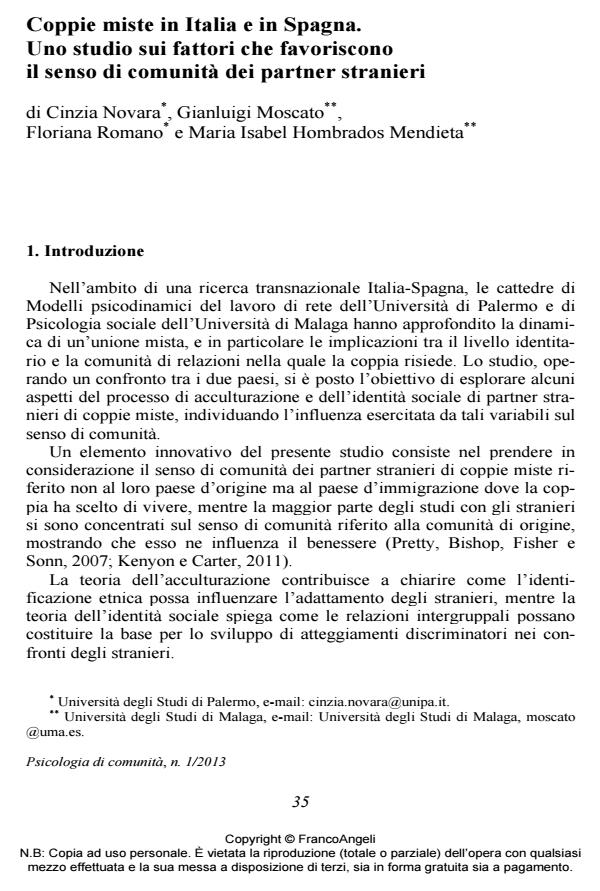Intercultural couples in Italy and Spain. A study of factors promoting life satisfaction among foreign partner
Journal title PSICOLOGIA DI COMUNITA’
Author/s Cinzia Novara, Gianluigi Moscato, Floriana Romano, Maria Isabel Hombrados Mendieta
Publishing Year 2013 Issue 2013/1
Language Italian Pages 12 P. 35-46 File size 869 KB
DOI 10.3280/PSC2013-001004
DOI is like a bar code for intellectual property: to have more infomation
click here
Below, you can see the article first page
If you want to buy this article in PDF format, you can do it, following the instructions to buy download credits

FrancoAngeli is member of Publishers International Linking Association, Inc (PILA), a not-for-profit association which run the CrossRef service enabling links to and from online scholarly content.
The aim of this paper was to analyze how ethnic identification (ingroup and outgroup) and perceived discrimination (both as foreigner as partner of mixed couple) are related to sense of community (SoC) among foreign partner in intercultural families resident in Italy and Spain. The results show that in both groups the foreign partner’s identification with their own ethnic-cultural group is not associated with SoC. In turn, increased perceived discrimination as a partner of mixed couple leads to a decreased SoC and life satisfaction.
Keywords: Mixed couples; sense of community; satisfaction with life; foreigners; ethnic identification; perceived discrimination.
Cinzia Novara, Gianluigi Moscato, Floriana Romano, Maria Isabel Hombrados Mendieta, Coppie miste in Italia e in Spagna. Uno studio sui fattori che favoriscono il senso di comunità dei partner stranieri in "PSICOLOGIA DI COMUNITA’" 1/2013, pp 35-46, DOI: 10.3280/PSC2013-001004